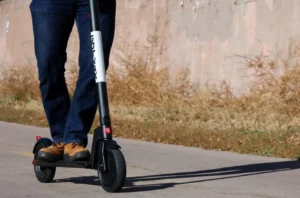As scooters weave through urban landscapes, their presence on the roads is not only defined by their sleek design and zippy performance but also by the glow of their lights.
In this article, we’ll shed light on the significance of scooter lights, exploring how these illumination features contribute to rider safety, visibility, and a smoother overall commuting experience.
Enhanced Visibility at Night
Scooter lights are more than just aesthetic elements; they are essential safety features, particularly during nighttime rides.
The headlights illuminate the road ahead, ensuring that riders can navigate safely in low-light conditions.
Properly functioning scooter lights not only help the rider see but also make the scooter more visible to pedestrians, cyclists, and other motorists.
Turn Signals for Communication
Many scooters come equipped with turn signals that add an extra layer of communication on the road.
Clearly indicating your intentions to turn enhances overall traffic safety, reducing the risk of collisions with other vehicles.
Utilizing turn signals promotes a smoother flow of traffic and fosters a sense of predictability among fellow road users.
Brake Lights for Reactive Safety
Brake lights on scooters serve a dual purpose: they signal to others that the scooter is slowing down or coming to a stop, and they contribute to the rider’s safety by making them more noticeable.
Responsive brake lights are crucial in preventing rear-end collisions and ensuring that the scooter is a well-integrated part of the traffic system.
Adaptive Lighting Technology
Advanced scooters often feature adaptive lighting technology, which adjusts the brightness and range of the headlights based on the surrounding conditions.
This technology improves visibility without blinding oncoming traffic, contributing to a safer nighttime riding experience.
Weather Adaptability
Scooter lights are designed to withstand various weather conditions, ensuring functionality even in rain, fog, or snow.
Well-protected lights contribute to rider confidence and safety, allowing them to maintain visibility and be seen by others in challenging weather situations.
Compliance with Regulations
Adhering to lighting regulations is not just a legal requirement but a key aspect of responsible scooter riding.
Properly functioning lights, including headlights, brake lights, and turn signals, ensure that riders comply with traffic laws, reducing the risk of accidents and promoting a safe and regulated road environment.
Conclusion
Scooter lights are more than just accessories; they are vital components that contribute to the safety, visibility, and overall functionality of scooters on the road.
As riders, it’s important to regularly inspect and maintain the lights on your scooter to ensure they operate optimally.
By prioritizing the importance of scooter lights, riders can enjoy safer journeys, confident in the knowledge that they are not only seeing the road ahead but also being seen by others on the bustling urban streets.



